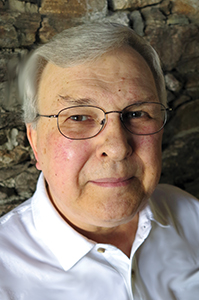 Mixing Engineering and Politics
Mixing Engineering and Politics
For elected officials, nothing beats a bridge to symbolize a nation’s technical prowess – or promote their agendas.
By Henry Petroski
Last May, Nicola Sturgeon was elected First Minister of Scotland, and her left-wing secessionist Scottish National Party won a remarkable 56 of 59 seats in the British Parliament. Just days after the landslide victory she posed with the newly elected members before a dramatic backdrop that for 125 years has symbolized Scotland’s engineering prowess. The majestic Forth Bridge dominating the water and sky behind the politicians sent a clear signal that Sturgeon and her party would be a powerful united force to be reckoned with in Westminster.
This was not the first time a major engineering structure had been used to symbolize a nation or promote a political agenda. In 2004, the United Kingdom began issuing a series of £1 coins, the reverse of each featuring a bridge iconic to one of the U.K.’s four constituent countries. The first coin issued represented Scotland, and it was the cantilevered Forth Bridge that graced it. In 2007, the Bank of Scotland began releasing a series of banknotes featuring bridges, and the Forth Bridge visually dominated the £20 note.
It is not only the United Kingdom that exploits its engineering heritage for nationalistic and political ends. U.S. politicians are famous for their prominent presence at groundbreaking and dedication ceremonies for public works. And on the plaques that commemorate the people behind bridges, dams, and other edifices, the names of politicians typically precede, if not completely displace, those of the engineers who designed the project and oversaw its construction.
A couple of years ago, when President Barack Obama wished to call attention to the sorry state of U.S. infrastructure and show that his administration was going to do something about it, he spoke before the functionally obsolete Tappan Zee Bridge that carries the New York State Thruway across the Hudson River. At that occasion he announced that he was fast-tracking the Tappan Zee replacement and 13 other major infrastructure projects to encourage development and promote job growth for the ailing construction industry.
When the fiscal year 2016 federal budget was released by the White House, a photograph of the Tappan Zee Bridge was featured on the cover to signal that infrastructure was a fiscal focus of the administration. This was the first time an image of any kind had appeared on the multi-volume budget, and it surely was intended to add emphasis to the administration’s message. Unfortunately, the $478 billion allocated over six years for transportation infrastructure was but a small portion of the nearly $4 trillion annual national budget detailed inside the book and was widely considered inadequate to restore the nation’s roads and bridges to acceptable standards.
In the current presidential election year, we can expect bridges and other critical pieces of infrastructure to become even more prominently and frequently used as dramatic settings for candidates and their speeches about the nation’s economy, infrastructure, health, and pride. Indeed, these are all closely interrelated – as both politicians and pundits increasingly acknowledge.
Bridges are indisputably the most effective pieces of infrastructure to make the point. Like the Forth railway and Tappan Zee spans, they often are located in places that make them natural panoramic backdrops for podiums on which politicians can assemble and declaim their role in promoting legislation and budgets that make what towers behind them possible.
Engineers do a good job of standing behind the bridges and other pieces of infrastructure for which they are technically responsible. They might take a lesson from politicians and also stand in front of their signature public works to promote the engineering profession by calling attention to what engineers do for our economy, standard of living, and national pride.
Henry Petroski is the Aleksandar S. Vesic Professor of Civil Engineering and a professor of history at Duke University. His forthcoming book, The Road Taken: The History and Future of America’s Infrastructure, will be published in February.
Photo by Catherine Petroski